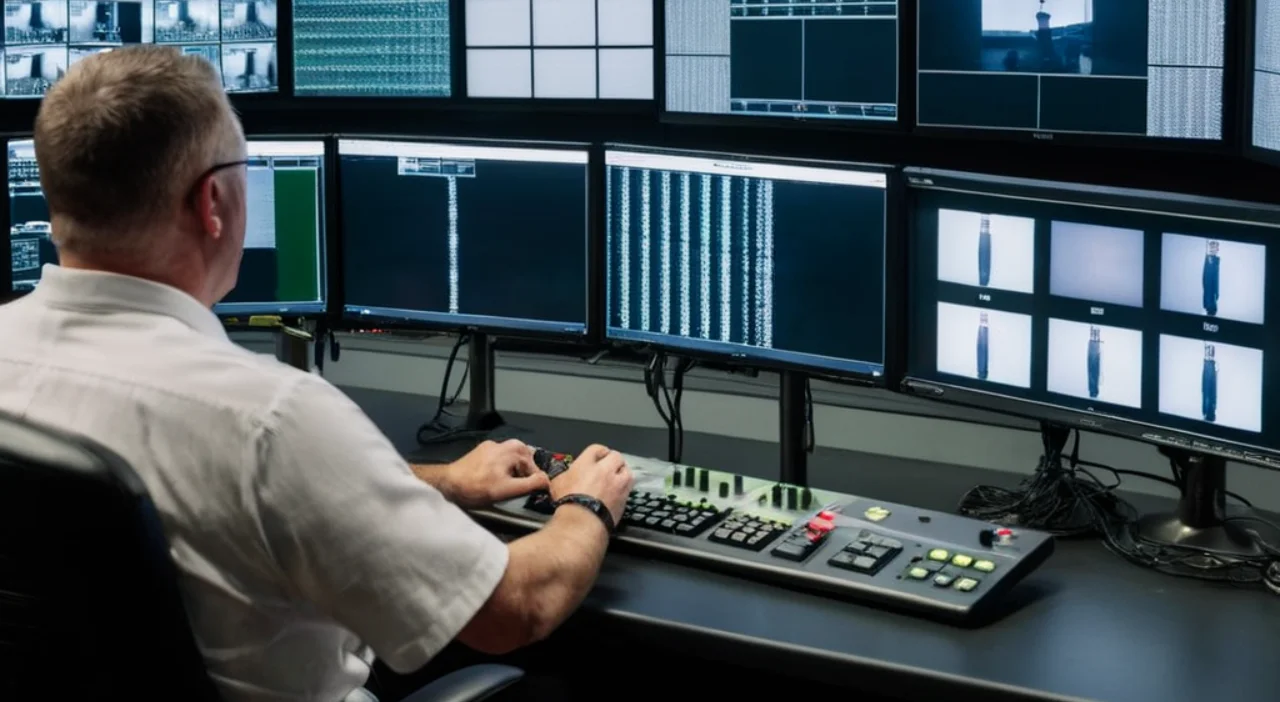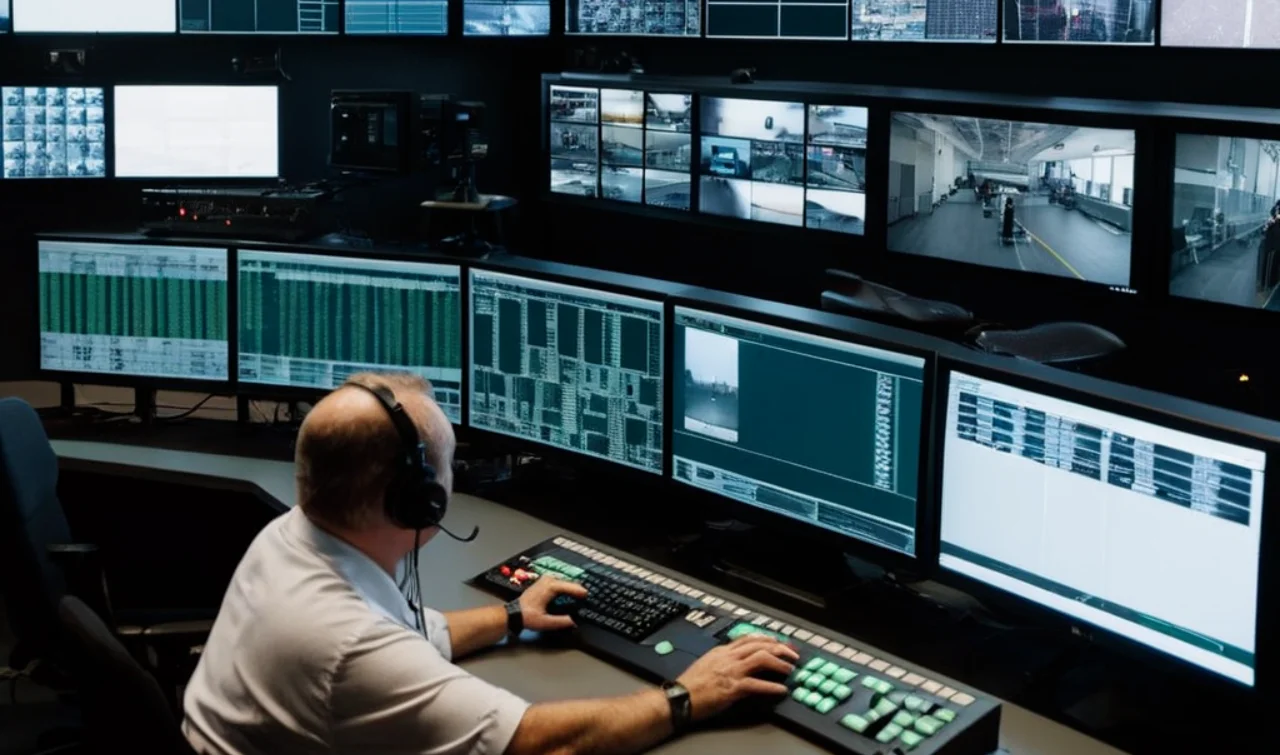As a hotel owner, providing a safe and secure environment for your guests and staff should be a top priority. One of the best ways to enhance security is by installing a closed-circuit television (CCTV) system and monitoring it from a centralized CCTV control room.
A CCTV control room allows security personnel to view live footage from surveillance cameras placed throughout the hotel. Operators can monitor activities, react quickly to incidents, and retrieve recorded video when needed. Having a dedicated space for this crucial role creates a surveillance hub to coordinate all of your property’s security operations.
If you’re considering adding a CCTV system to your hotel, you’ll need to carefully plan the control room space. This guide will walk you through best practices for control room layout, equipment, procedures, and duties to help you make informed decisions.
Optimal Control Room Layout
The layout of your CCTV control room impacts functionality and operator performance. Follow these tips when designing the space:
 Make it spacious enough – It’s easy to underestimate how much room you’ll need. Mark out the floor plan with the major equipment like desks, monitors and storage units. Avoid clutter and allow open circulation.
Make it spacious enough – It’s easy to underestimate how much room you’ll need. Mark out the floor plan with the major equipment like desks, monitors and storage units. Avoid clutter and allow open circulation.-
Ensure good lighting – Control room lighting keeps staff alert but avoids eye strain. Use multiple light sources to evenly illuminate the space.
- Minimize distractions – Operators need to concentrate, so keep ambient noise and interruptions low. Choose a quiet, private area if constructing a new room.
- Allow visibility – Clear sight lines to monitors and displays improves coordination between operators. Avoid pillars, half-walls or other obstructions.
- Consider ergonomics – Operators sit for long periods, so choose adjustable chairs and consoles to enhance comfort and posture. This promotes productivity and wellness.
Essential Control Room Equipment
While specific components will vary, these are typical must-haves for a hotel CCTV control room:
- Control consoles – These allow adjustment of camera views, recording controls and other security system functions.
- NVRs/DVRs – Network video recorders and digital video recorders store and manage camera footage. High capacity is key.
- Displays – Video walls, large screens and monitors allow simultaneous viewing of many camera feeds.
- Workstations – Operators need desks, chairs and computer monitors suited for extended use.
- Alarm systems – These generate alerts when intrusion, fire or other threats are detected, prompting urgent response.
- Communications gear – Headsets, intercoms and phones connect operators to each other and authorities.
- Network hardware – Routers, switches and servers transmit and manage video across the system.
- Backup power – An uninterruptible power supply maintains operation during outages.
Standard Operating Procedures
Your control room runs most efficiently when standard protocols are implemented:
- Assign monitoring zones – Divide camera views between operators for assigned focus areas.
- Control access – Require ID badges/codes to enter secure areas and verify identities, assisted by AI analytics.
- Monitor remotely – Operators watch assigned camera feeds continuously to detect and respond to incidents.
- Respond to alarms – Alerts from sensors trigger immediate operator notification of authorities.
- Give shift reports – Operators log activities at the end of each shift for supervisors to review patterns.
Operator Duties and Responsibilities
Your CCTV control room staff will be responsible for:
- Observing all video feeds – Constantly viewing screens for signs of suspicious activity.
- Adjusting cameras – Improving framing, focus and other properties to refine visibility.
- Managing security software – Controlling camera, access and alarm systems through customized interfaces.
- Contacting emergency services – Calling police, fire crews or medical support as situations warrant.
- Reporting issues – Informing supervisors of equipment malfunctions, licensing plate numbers or video retrieval needs.
- Documenting shifts – Logging all routine and exceptional occurrences throughout each work period.
With clear duties and expectations, operators can provide vigilant security monitoring and response.
Best Practices for Daily Operations
 To keep your CCTV system optimized for security, build these verifications into operators’ daily routines:
To keep your CCTV system optimized for security, build these verifications into operators’ daily routines:
- Cameras – Check for adjustments needed, clean lenses, verify motion sensing.
- Storage – Confirm available capacity, review recorded video spot checks.
- Cabling – Inspect cable connections, look for damaged wires.
- Equipment – Test displays and settings, adjust as required.
- Lighting – Replace bulbs as needed, adjust brightness.
- Time/Date – Confirm accurate timestamping of recorded footage.
By completing these quick validations regularly, technical issues can be spotted early and resolved.
Designing an Effective Control Room
The CCTV control room layout and design directly impact functionality. When constructing or renovating your space, reference these room examples:
- A basic layout has workstations facing multiple displays to view camera feeds efficiently.
- More advanced designs have impressive video walls with 20+ large monitors combined seamlessly.
- Individual workstations should have an ergonomic desk and chair along with computer monitors.
- Operators will be seated facing the displays to monitor assigned camera views constantly.
- The ventilation system must keep the room and equipment cool to prevent overheating issues.
Properly designed, your control room will allow staff to protect guests effectively.
Key Takeaways for Hotel Owners
Installing a CCTV system offers immense security benefits if you invest in a well-planned control room. Keep these tips in mind:
- Allow enough space for your equipment, displays and operator workstations.
- Choose ergonomic, adjustable furnishings to maximize operator comfort.
- Implement clear standard procedures for monitoring, reporting and system management.
- Provide operators with training on equipment use, emergency contacts and documentation.
- Set up maintenance routines like daily equipment checks to sustain peak performance.
By following these best practices, your CCTV control room will improve supervision and response, enhancing safety across your property. Guests and staff can feel more secure knowing a dedicated team is keeping vigilant watch.
